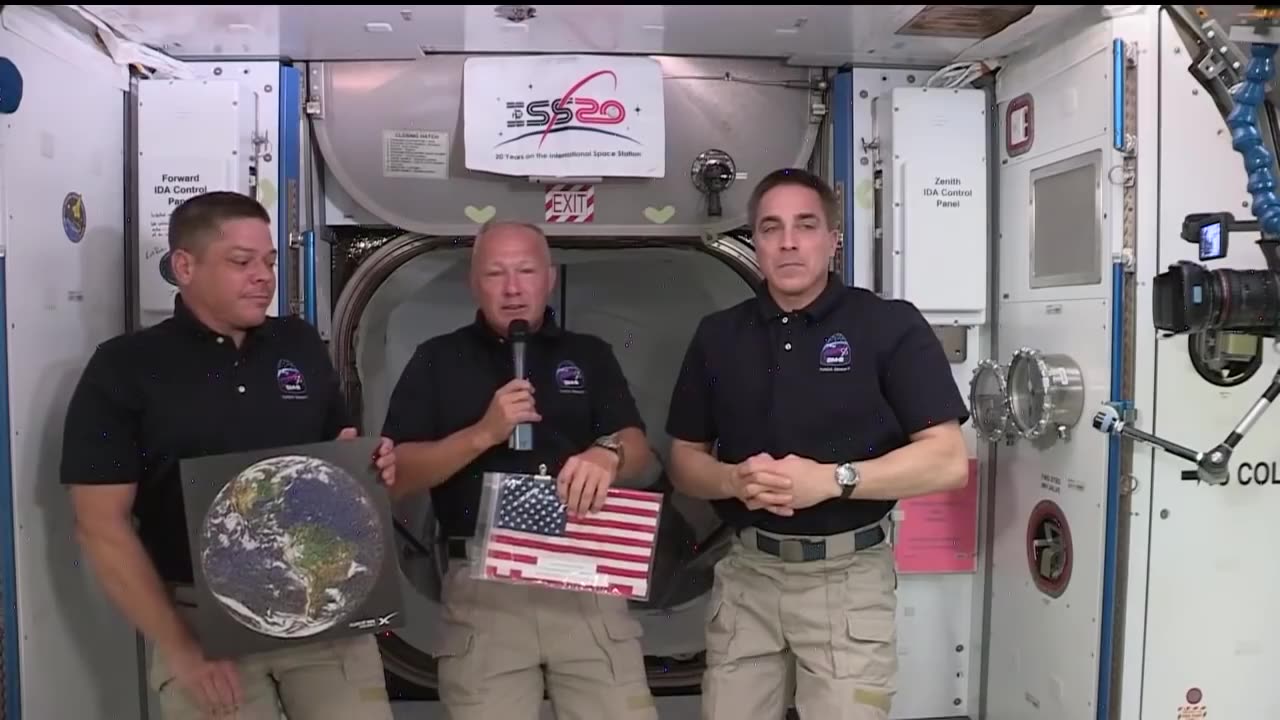Premium Only Content

NASA's SpaceX DM-2 Mission Highlights
The SpaceX Demo-2 test flight for NASA's Commercial Crew Program was the first to deliver astronauts to the International Space Station and return them safely to Earth onboard a commercially built and operated spacecraft.
The crew launched on Saturday, May 30 on a SpaceX Falcon 9 rocket from NASA’s Kennedy Space Center in Florida and arrived at the orbiting laboratory on May 31. The SpaceX Crew Dragon “Endeavour” splashed down off the coast of Pensacola, Florida, Sunday, Aug. 2 at 2:48 pm EDT following their undocking from the International Space Station Saturday, Aug. 1 at 7:35 pm EDT.
During their 62 days aboard station, Robert Behnken and Douglas Hurley contributed more than 100 hours of time to supporting the orbiting laboratory’s investigations, participated in public engagement events, and supported four spacewalks with Behnken and Cassidy to install new batteries in the station’s power grid and upgrade other station hardware.
These activities are a part of NASA’s Commercial Crew Program, which has been working with the U.S. aerospace industry to launch astronauts on American rockets and spacecraft from American soil the International Space Station for the first time since 2011. This is SpaceX’s final test flight and is providing data about the performance of the Falcon 9 rocket, Crew Dragon spacecraft and ground systems, as well as in-orbit, docking, splashdown and recovery operations.
The test flight also will help NASA certify SpaceX’s crew transportation system for regular flights carrying astronauts to and from the space station. SpaceX is readying the hardware for the first rotational mission that will occur following NASA certification, which is expected to take about six weeks.
The goal of NASA’s Commercial Crew Program is safe, reliable and cost-effective transportation to and from the International Space Station. This could allow for additional research time and increase the opportunity for discovery aboard humanity’s testbed for exploration, including helping us prepare for human exploration of the Moon and Mars.
-
 LIVE
LIVE
GloryJean
2 hours agoAggressive Solo Gameplay on Mouse & Keyboard 🖱️ 6.7 K/D
61 watching -
 LIVE
LIVE
The Pascal Show
1 hour ago $0.11 earnedBREAKING! Mass Shooting At Annunciation Church In Minneapolis Multiple Shot
106 watching -
 1:43:04
1:43:04
Dear America
3 hours agoNo More IRS!! Tariffs Bring In Over $500 BILLION! + Taylor Swift Got ENGAGED… This Is A Nightmare!!
91K73 -
 LIVE
LIVE
Caleb Hammer
19 hours agoHe Just Sucks… | Financial Audit
72 watching -
 LIVE
LIVE
MYLUNCHBREAK CHANNEL PAGE
2 hours agoThe Population Was ZERO
548 watching -
 LIVE
LIVE
Wendy Bell Radio
7 hours agoTrump Cracks The Barrel
7,132 watching -
 LIVE
LIVE
The Big Mig™
3 hours ago2020 Election Fraud Burn Bags Discovered
5,159 watching -
 LIVE
LIVE
Law&Crime
2 hours ago $0.54 earnedLIVE: Adelson Matriarch Murder Trial — FL v. Donna Adelson — Day 4
104 watching -
 LIVE
LIVE
Badlands Media
10 hours agoBadlands Daily: August 27, 2025
3,794 watching -
 LIVE
LIVE
The State of Freedom
5 hours agoFLF: #15 Obedience to God Unlocks Mysteries & Brings Adventure w/ Dave Hayes
106 watching